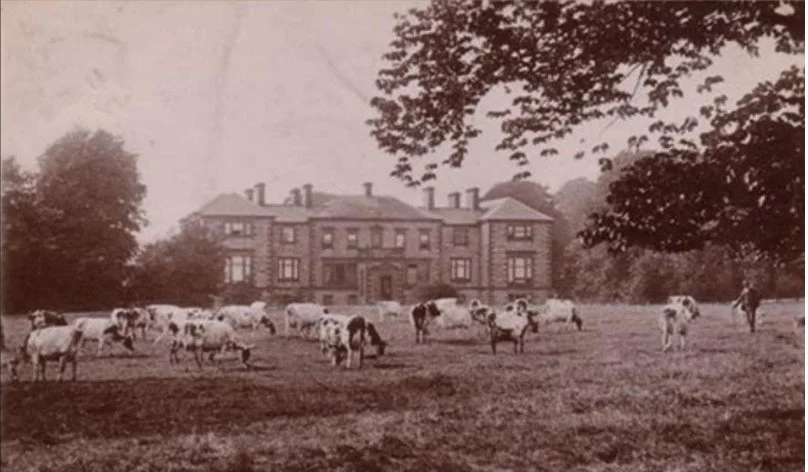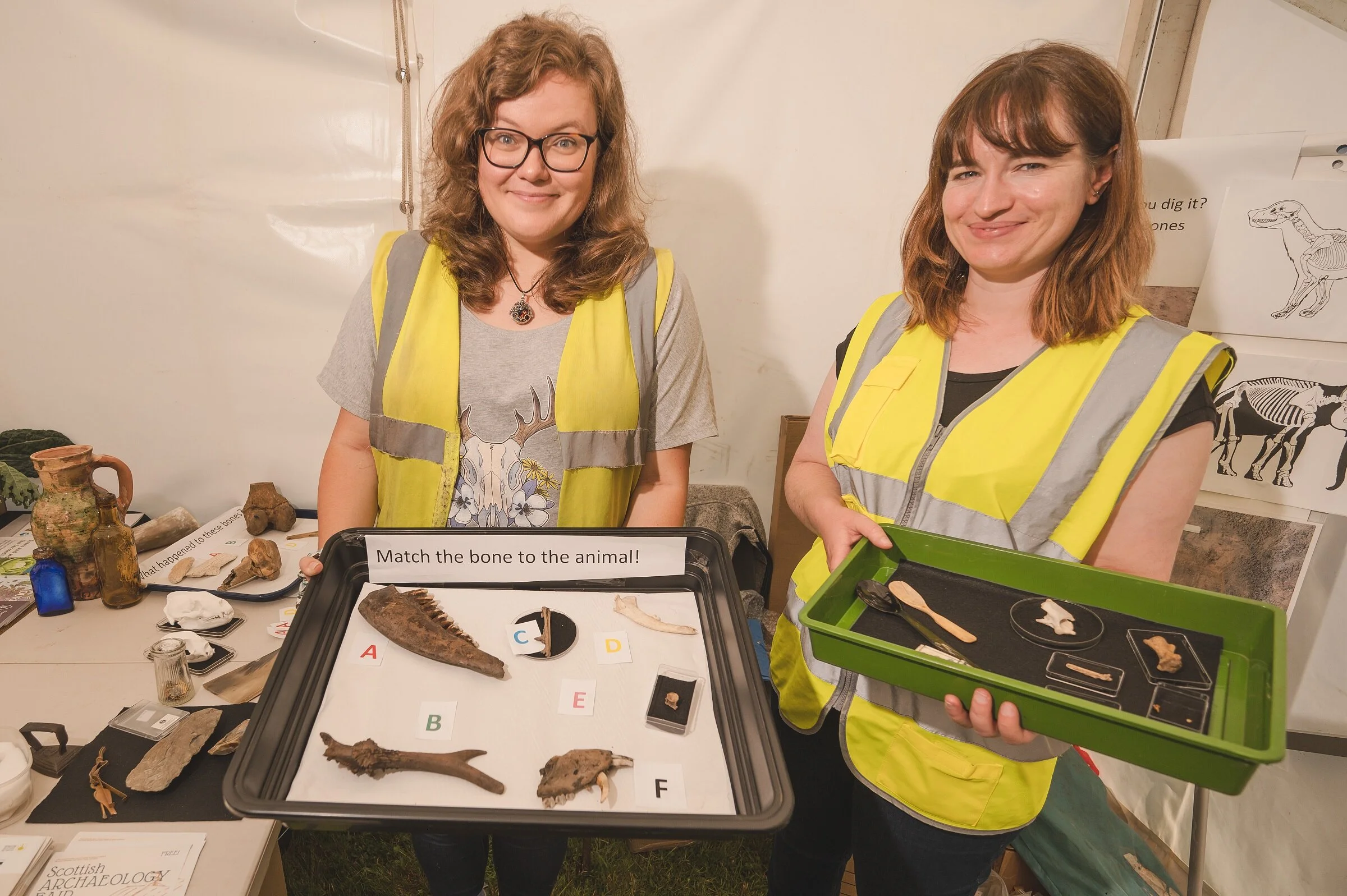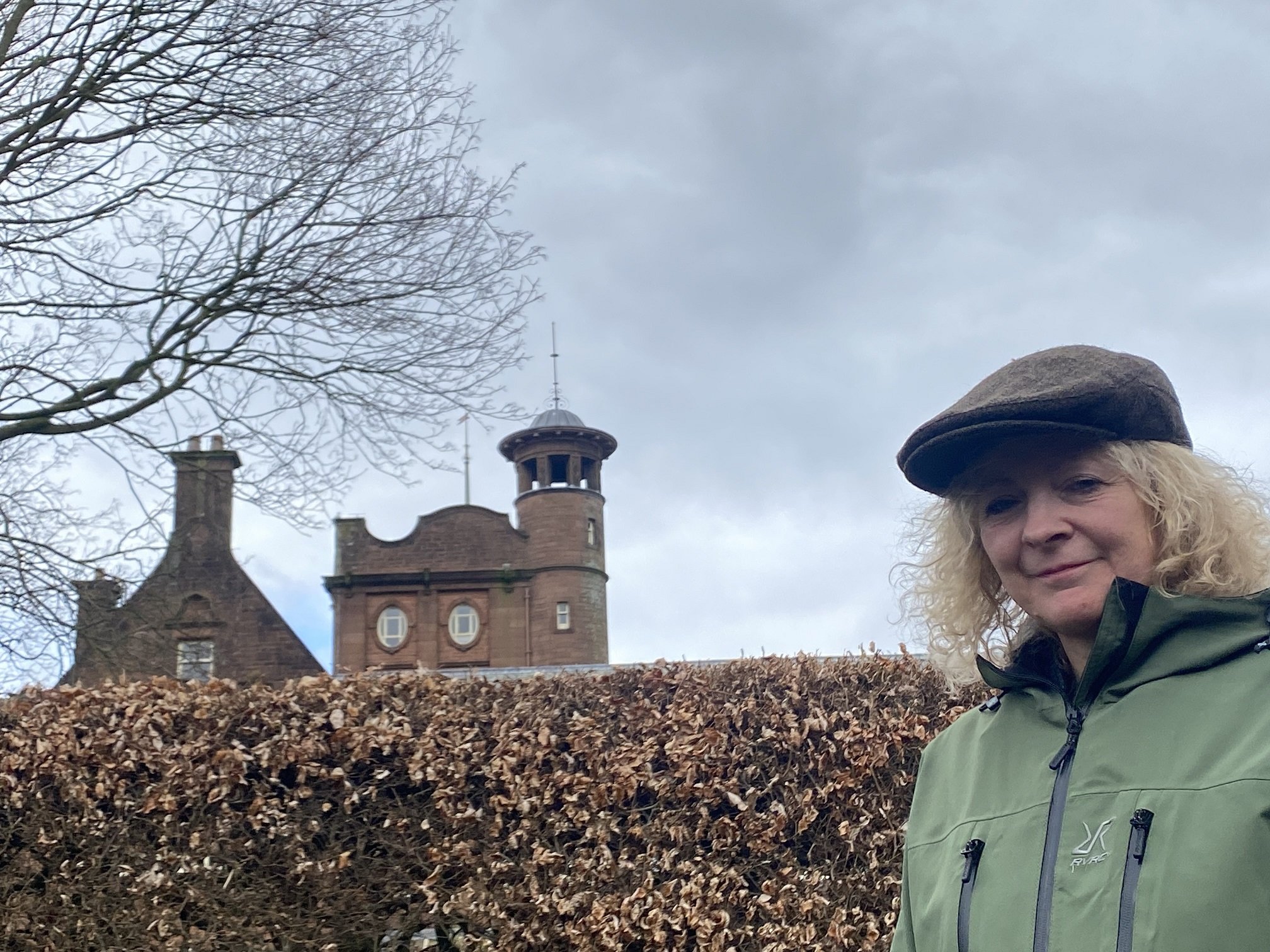A volunteer-led study of Galloway’s Stately Homes is published, marking the end of the ‘Can You Dig It’ Community Archaeology Project
The ‘Can You Dig It’ community archaeology project – part of the Galloway Glens Scheme – has worked with hundreds of volunteers over the last 4 years to inspire and understand the archaeology and history of the Ken/Dee valley in Galloway – showcasing archaeological processes and approaches. From digs to field walks, from self-led covid friendly study work to the phenomenally popular series of online events, the project has been wide ranging.
Recent months have seen the ‘Building Biographies’ project underway, with volunteers recruited to undertake research into some of the large country houses within Galloway. The findings are now published, marking the end of the Can You Dig It project.
Each volunteer was given their own specific house to research, piecing together timelines from their initial construction through to how they stand today. The project included houses that were still in use, ruinous or even demolished, featuring a variety of functions dating back to the 19th century or earlier. As more volunteers signed up the study area expanded to include a mix of country houses from across Galloway, and even a few from Dumfriesshire.
By the end of the project, 32 volunteers submitted their findings as summary reports, which covered 42 country houses across Galloway. The volunteers included people from Dumfries and Galloway, Ayrshire, Glasgow and America. Their results revealed stories of the people who designed, lived and worked within these houses, stories which reflect both local history and connections to far-flung places during times of peace and war.
The passion and commitment shown by the volunteers in uncovering the stories of these houses, both good and bad, has been inspiring, and they have created an impressive record which will be shared for many years to come.
Some highlights:
Fludha, Kirkcudbright:
WWII – one of the Intelligence Agencies commandeered one of its annex rooms to put nearby Ellenbank under surveillance due to suspicions of them spying
WWII – only bombing incident in Kirkcudbright happened on an abandoned farm near to Fludha, with the blast waking up the residents. It dislodged some plaster off the bedroom ceiling and cracked the base of the water fountain
Neptune Park, Kirkcudbright
Home of William Hanna Clark, the landscape and figure artist, between 1918 and 1923
Broomlands, Troqueer
1854 bought by Mary Dalgairns and opened as an asylum catering to female patients and run by female staff;
WWI – Red Cross Hospital for soldiers with 788 soldiers being treated there in 1917
WWII – occupied by War Department and King Haakon of Norway dined there in 1942 when large numbers of Norwegian soldiers were stationed in Dumfries
Hensol House, Balmaghie
Built in 1822 for John Cuninghame – a keen hunter who became friends with American President Theodore Roosevelt who he once saved from being killed by an elephant whilst hunting
Slogarie House, Balmaghie
Wallis Simpson was friends with the owners, William Archer and Mary Ann Milner Gibson, and it is rumoured that Edward VIII proposed to her in the garden of Slogarie
Senwick House, Borgue
WWII – gardens were altered by Prisoners of War who were called upon to create terraces; a plaque commemorating them was placed in the garden at the end of the war
Owned by Innes Ireland from 1972-1976 – the first Scottish driver to win a Grand-Prix first place and remembered locally for driving his car out onto the ice of Carlingwark Loch as a young man
Over Courance, Kirkmichael
1906 – bought by James Weir, one of the founders of the Weir Group in Cathcart
Lochbank, Castle Douglas
WWII – used as a command post for troops stationed in Castle Douglas, the Raid on St Nazaire was planned and executed from here
Corsock House
John ‘The Martyr’ Neilson owned the lands of Corsock in the 1600s, took part in the Pentland Rising and was captured at Rullion Green and imprisoned in Edinburgh. He was tortured with ‘The Boot’ and then hanged at The Mercat Cross on 14th December 1666
Castledykes, Dumfries
1820s – Owners Ebenezer Stott scandalised the Dumfries population by paying the Town Council the huge sum of £100 for soil from the Merse to enhance his gardens
1875 – owner Dr James Bruce tried to remove the ancient roots of trees on his property by blasting them out with cotton patent gunpowder to the alarm of all living nearby
The Building Biographies project was the final strand of the Can You Dig It project.
A number of the initiatives undertaken have been documented or recorded for subsequent use; this varies from YouTube recordings of events, through to latest work exploring the history of Galloway Milestones and Lost Wells.
Video Recordings on the Galloway Glens YouTube Channel, including:
Accessible reports include:
Barhill Wood, Little Wood Hill & Upper Gairloch Booklets (and others)
Data Structure Report for excavations at Little Wood Hill in Threave
Data Structure Report for test pitting at Castledykes in Kirkcudbright
Data Structure Report for test pitting at Moat Brae in Kirkcudbright
Technical Notes: Web-based research, 3d Models from photographs, Survey Skills
Technical Notes: Polmaddy, Carminnow Fort, Glenlochar Roman Fort, Hut Circles of Moss Raploch
Claire Williamson, from Rathmell Archaeology, has led the work of the project since inception in 2019. Looking back at the range of work undertaken, Claire said:
“Over the last four years, the Can You Dig It volunteers have investigated rock art, Iron Age enclosures, castle sites, farmsteads and a lead mine. They have tracked down milestones and high ground wrecks, mapped lost wells and delved into the good and bad of Galloway's past, and they have done it all with an unwavering enthusiasm and commitment.
Working on the Can You Dig It project has been a highlight of my career, and I am grateful to the Galloway Glens team, and to each and every volunteer, for being such a truly fantastic group of people.”
Jan Hogarth, Galloway Glens Education & Community Engagement Officer, oversaw the Can You Dig It project, and added:
“’Can You Dig it’ has been a remarkable Community Archaeological project and I feel really honoured to have been able to work with Claire Williamson and her hugely knowledgeable and enthusiastic teams of volunteers. Can You Dig It is like being on a real-life Indiana Jones type adventure (without the mythical animals and danger) uncovering, exploring and investigating many different landscapes, rural places, diverse subject areas (through the events and online talks) and allowed us all to appreciate how people lived with the land in the past.
The project has grown an audience from across the globe and up skilled communities of researchers so they can continue the great work that Claire and her team began in this special landscape.
We are very grateful to everyone who took part and a massive thanks to the National Lottery Heritage Fund and Historic Environment Scotland Lottery for their support, engagement in the project and encouragement.”
McNabb Laurie, Galloway Glens Landscape Partnership




